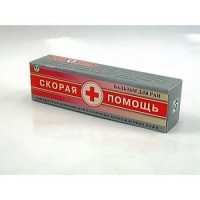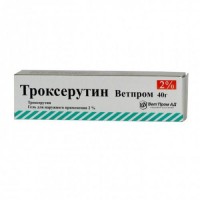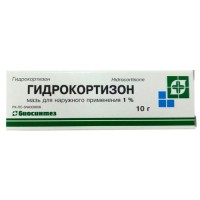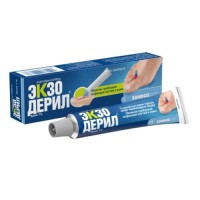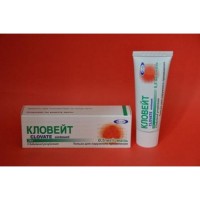Sinaflan Ointment (Fluocinolone Acetonide) 0.25 mg/g, 15 g
- $4.90
What is Sinaflan Ointment?
Sinaflan Ointment contains the active ingredient fluocinolone acetonide, a potent corticosteroid used for treating a variety of skin conditions.
With anti-inflammatory, anti-itch, and vasoconstrictive properties, it is commonly prescribed for skin ailments that involve persistent itching, inflammation, and hyperkeratosis (thickening of the skin).
The ointment is formulated at a concentration of 0.025%, packaged in a 15 g tube, making it suitable for external use on affected areas.
How is Sinaflan Ointment Used?
Sinaflan is typically applied in a thin layer to the affected skin 1-2 times daily. For children over 2 years of age, the ointment should be used with caution, limited to once daily and under medical supervision. For adults, treatment duration generally spans 5-10 days, though in more persistent cases, it should not exceed 2 weeks. It is essential to avoid applying the ointment to large areas (more than 20% of the body surface) and to the face for more than one day. Sinaflan is ideal for dry dermatological conditions, and when used on children, it should be applied only to small patches of skin (up to 10%).
What Conditions Can Sinaflan Ointment Treat?
Sinaflan Ointment is effective in managing several dermatological issues, particularly non-infected, dry skin conditions that respond well to corticosteroids. It is used to treat:
- Allergic contact dermatitis
- Atopic dermatitis and neurodermatitis
- Seborrheic and atopic eczema
- Psoriasis (excluding widespread plaque psoriasis)
- Lichen planus
- Pruritus (itching)
- External ear inflammation (otitis externa)
What Precautions Should Be Taken?
Sinaflan Ointment should not be used without breaks for longer than two weeks, as prolonged use increases the risk of side effects like skin thinning, fluid retention, and elevated blood sugar levels. Individuals with certain conditions, such as skin infections (tuberculosis, fungal, or viral), open wounds, or syphilis-related skin lesions, should avoid this medication. Additionally, patients with glaucoma or cataracts should refrain from applying the ointment near the eye area, as it can worsen these conditions.
What Are the Possible Side Effects of Sinaflan Ointment?
Common side effects may include local skin reactions such as burning, itching, or dryness. Prolonged use, especially on large areas or under occlusive dressings, may lead to systemic absorption, potentially causing adrenal suppression, Cushing's syndrome, and elevated blood sugar levels. Other side effects could include skin thinning, stretch marks, increased hair growth, or skin color changes (depigmentation or hyperpigmentation). Rarely, eye issues such as blurred vision, glaucoma, or cataracts may occur if applied near the eyes.
Can Sinaflan Ointment Be Used with Other Medications?
Sinaflan Ointment is generally compatible with antimicrobial treatments.
However, it may reduce the effectiveness of antihypertensive, diuretic, and hypoglycemic medications.
Therefore, it is essential to inform your healthcare provider of all medications you are using.
How Should Sinaflan Ointment Be Stored?
To maintain its effectiveness, Sinaflan Ointment should be stored at a temperature between 8°C and 15°C (46°F to 59°F), away from children.
Avoid using the ointment after its expiration date, which is five years from the date of manufacture.
What Should Be Done in Case of Overdose?
Overapplication or long-term use of Sinaflan Ointment can lead to symptoms such as burning, itching, and even systemic effects like elevated blood sugar (hyperglycemia) or Cushing’s syndrome.
In case of overdose, it is crucial to discontinue use gradually and seek medical advice for symptomatic treatment.


